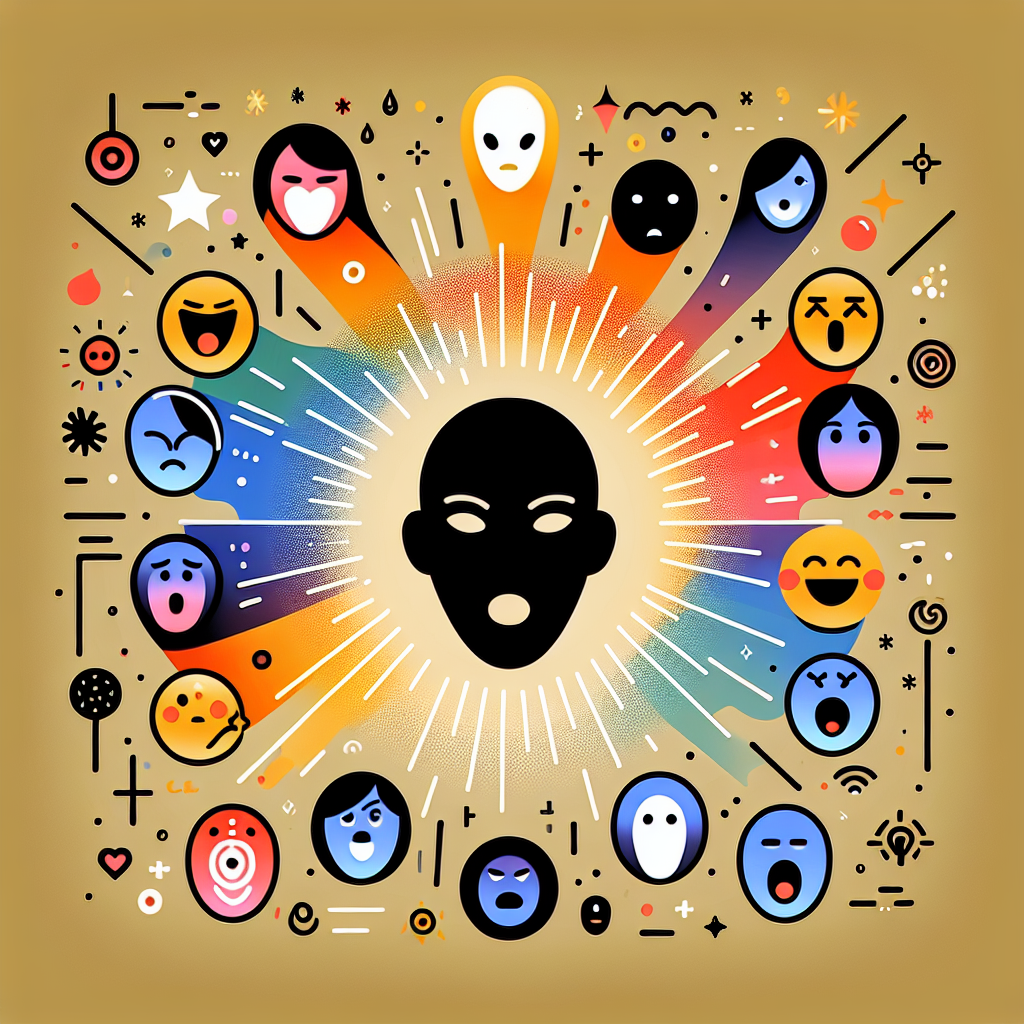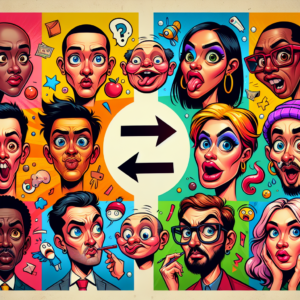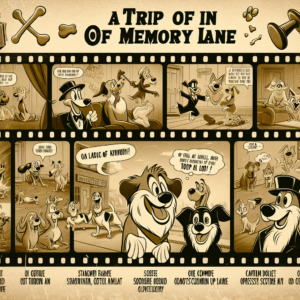Imagine scrolling through your social media feed and coming across a series of faceless cartoon portraits. Each one is uniquely captivating, sparking your curiosity and drawing you in with a sense of mystery and emotion. What is it about these enigmatic images that resonates with us on such a deep level? How can a simple cartoon character evoke such powerful feelings within us?
In this article, we will delve into the fascinating world of faceless cartoon portraits and explore the impact they have on our emotions and perceptions. From the allure of mystery to the power of imagination, we will uncover the secrets behind these intriguing images and unravel the underlying psychology at play.
The Allure of Mystery
One of the key reasons why faceless cartoon portraits are so inherently captivating is the element of mystery they convey. By obscuring the character’s face, artists are able to create a sense of intrigue and ambiguity that piques our curiosity and leaves us wanting more.
When we look at a faceless cartoon portrait, our instinct is to fill in the blanks and imagine what the character might look like underneath the mask of anonymity. This act of projection allows us to engage with the image on a deeper level, as we project our own emotions, biases, and desires onto the faceless figure before us.
The absence of facial features also serves to amplify the emotions and expressions conveyed through body language, posture, and surrounding elements. By stripping away the distraction of a detailed face, artists are able to focus our attention on the overall mood and atmosphere of the image, creating a more immersive and evocative experience for the viewer.
The Power of Imagination
Another key factor that contributes to the impact of faceless cartoon portraits is the role of imagination in interpreting and engaging with the images. When we are presented with a faceless character, our minds are free to wander and explore the possibilities of who that character might be and what emotions they might be experiencing.
This open-endedness allows us to project ourselves into the narrative of the image, creating a sense of empathy and connection with the faceless figure. We are able to relate to the character on a more personal level, as we bring our own experiences and emotions to the interpretation of the image.
Additionally, the simplicity of a faceless cartoon portrait leaves room for interpretation and reinterpretation, allowing us to see different facets of the character each time we look at the image. This fluidity of meaning adds depth and complexity to the image, inviting us to engage with it on a more introspective and introspective level.
The Psychology of Faceless Portraits
From a psychological perspective, the impact of faceless cartoon portraits can be attributed to a variety of factors. The absence of facial features triggers a cognitive process known as apophenia, or the tendency to perceive meaningful patterns or connections in unrelated or random stimuli.
When we look at a faceless character, our brains automatically seek out familiar shapes and forms in an attempt to make sense of the image. This process of pattern recognition activates our emotional centers and elicits a response from the limbic system, which is responsible for processing emotions and generating feelings of empathy and connection.
Additionally, the lack of facial expressions in faceless cartoon portraits forces us to rely on other cues, such as body language, color, and composition, to infer the emotional state of the character. This heightened sensitivity to non-verbal cues enhances our ability to perceive and interpret emotions in a more nuanced and intuitive way.
The Artistry Behind Faceless Portraits
The creation of faceless cartoon portraits requires a delicate balance of artistry, storytelling, and emotional resonance. Artists who specialize in this unique form of portraiture must possess a keen understanding of human emotions, body language, and visual communication in order to convey complex narratives and evoke deep-seated feelings within the viewer.
Through the skillful use of line, color, shape, and composition, artists are able to infuse their faceless characters with a sense of personality, depth, and emotion. Each stroke of the brush or click of the mouse is a deliberate choice that contributes to the overall mood and tone of the image, creating a visual language that speaks directly to our hearts and minds.
The artistry behind faceless cartoon portraits lies in the ability to capture the essence of a character without relying on traditional facial features. By focusing on the emotional core of the character and distilling it into its purest form, artists are able to create images that resonate with us on a profound and visceral level, transcending the limitations of verbal language and cultural barriers.
The Impact on the Viewer
As viewers, the impact of faceless cartoon portraits can be profound and lasting. These enigmatic images have the power to evoke a wide range of emotions, from curiosity and intrigue to empathy and nostalgia. They challenge us to think beyond the surface and engage with the deeper layers of meaning and symbolism embedded within the image.
Faceless cartoon portraits invite us to explore our own inner landscape and connect with the universal truths and emotions that unite us as human beings. They serve as mirrors that reflect back to us our own experiences, fears, and desires, allowing us to see ourselves in the characters we encounter and find solace in the shared humanity of our emotions.
The impact on the viewer is not limited to just emotional resonance, however. Faceless cartoon portraits also have the power to inspire creativity, spark imagination, and provoke thought. They encourage us to question our assumptions, challenge our perceptions, and explore new ways of seeing and understanding the world around us.
The Future of Faceless Portraits
As technology continues to evolve and the boundaries between the physical and digital worlds blur, the future of faceless cartoon portraits remains as enigmatic and intriguing as ever. With the rise of virtual reality, augmented reality, and artificial intelligence, artists have a whole new canvas on which to explore and experiment with the possibilities of faceless portraiture.
Virtual reality platforms allow users to immerse themselves in a world of faceless characters, where they can interact with and experience the emotions of these enigmatic figures in a completely new and innovative way. Augmented reality apps enable artists to overlay faceless portraits onto the real world, creating a seamless blend of fantasy and reality that challenges our perceptions and expands our understanding of what is possible in the realm of art.
Artificial intelligence technologies, such as deep learning algorithms and neural networks, offer artists the ability to generate infinite variations of faceless cartoon portraits based on a set of pre-defined parameters. This opens up a world of possibilities for creating personalized and interactive art that adapts to the unique preferences and emotions of each viewer, creating a truly immersive and engaging experience for all.
The future of faceless cartoon portraits is bright and full of potential, with endless opportunities for innovation, exploration, and collaboration. Artists and viewers alike are invited to embark on this exciting journey together, as we continue to push the boundaries of creativity and imagination in the digital age.
FAQ
What makes faceless cartoon portraits so captivating?
Faceless cartoon portraits are captivating because they evoke a sense of mystery, intrigue, and emotion that resonates deeply with viewers. By obscuring the character’s face, artists create a blank canvas upon which viewers can project their own emotions and experiences, making the image more relatable and engaging.
How do faceless cartoon portraits impact our emotions?
Faceless cartoon portraits impact our emotions by triggering cognitive processes such as pattern recognition and apophenia, which elicit feelings of empathy, connection, and curiosity. The absence of facial expressions forces us to rely on other cues, such as body language and composition, to infer the emotional state of the character, enhancing our ability to perceive and interpret emotions in a more nuanced way.
What is the future of faceless cartoon portraits?
The future of faceless cartoon portraits is bright and full of potential, with new technologies such as virtual reality, augmented reality, and artificial intelligence opening up exciting possibilities for innovation and experimentation. Artists are able to explore new ways of creating and interacting with faceless characters, while viewers can immerse themselves in a world of enigmatic images that challenge their perceptions and expand their understanding of art in the digital age.








+ There are no comments
Add yours